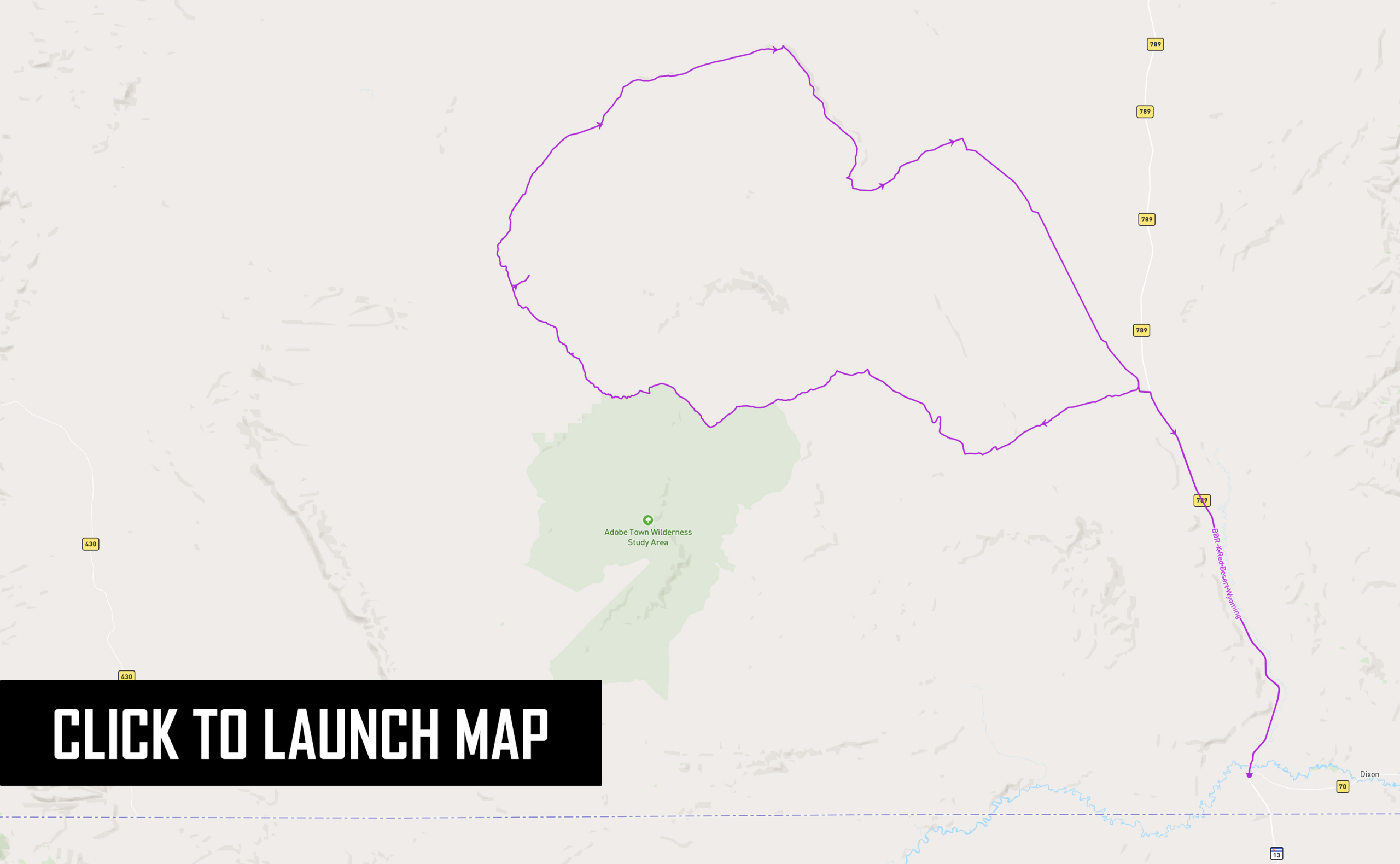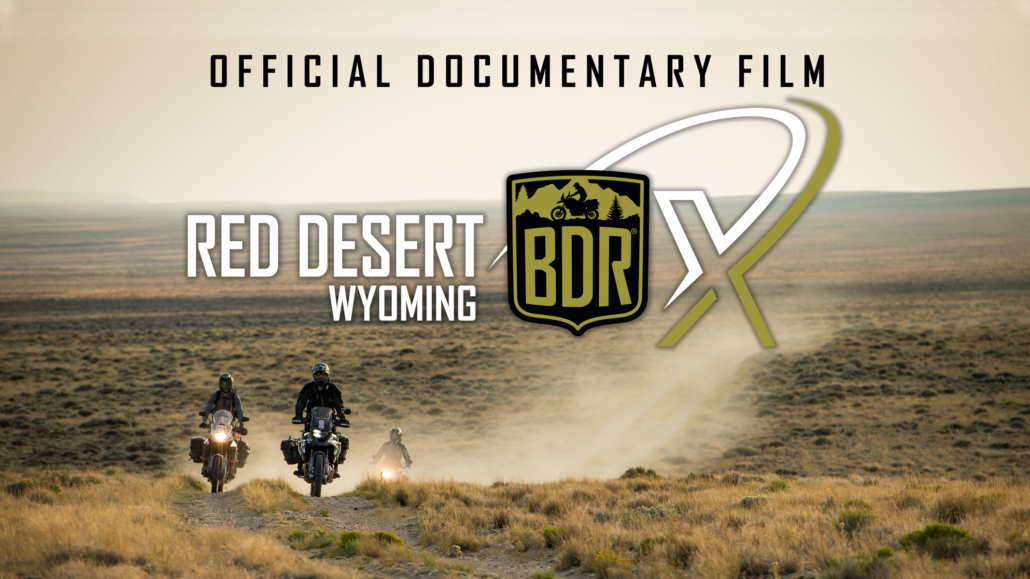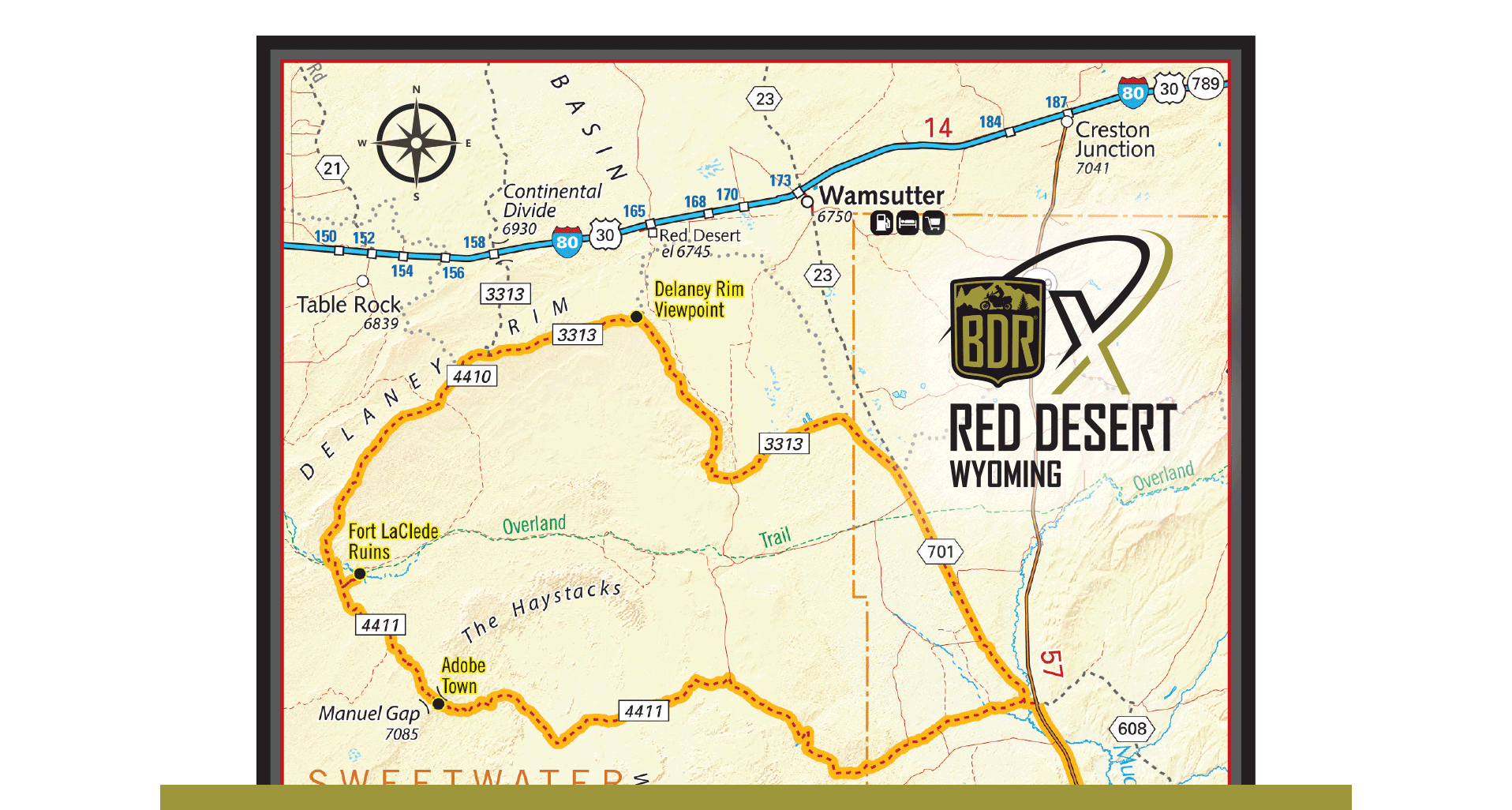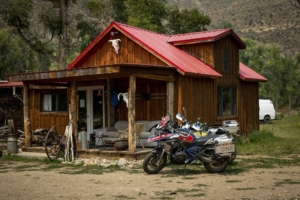Red Desert Wyoming BDR-X
Whether you’re riding the entire WYBDR and looking for just a little more, or in the southern Wyoming area on the hunt for an epic – but shorter ride, the Red Desert BDR-X will not disappoint.
This BDR-X shares the same starting point as the WYBDR and offers a sampling of Wyoming’s diverse terrain from the vast region known as the Red Desert. The loop is 149 miles long when starting and ending in the town of Baggs – so be sure to fuel up and grab supplies there BEFORE you set off. The route can be completed in one long day or broken-up into two. Dispersed camping is available mid-way through the route.
The Red Desert has remained lesser-known as a travel destination, but offers “National Park” quality scenery and fun riding. It is one of the last high-desert ecosystems in North America, and the home to Killpecker Sand Dunes, the largest living dune system in the United States. It is also home to the world’s largest herd of desert elk, and hosts the largest migratory herd of pronghorn in the lower 48 states.
Riders will enjoy varied landscape of buttes, dunes, sagebrush steppe, mountains, and rocky pinnacles. If you think about it, these are the same views and trails that hundreds of thousands of pioneers on the Oregon Trail experienced as they made their way toward Oregon, California, and Washington.
Depending on your skill level and current conditions, the Red Desert BDR-X will contain modest to difficult terrain. So, we recommend riding the loop in a clockwise direction putting the most challenging sections early on in the ride – allowing you the option to turn around if the sand or technical areas become overwhelming. This way you’ll have a shorter distance to backtrack and a lower risk of running out of fuel.
After riding tarmac north from Baggs for 22 miles on Hwy 789 the route turns west onto dirt roads that give a little insight into Wyoming’s vast mining and extraction industries. Continue on these roads with their intermittent deep sand, ruts and rock ledges for another 30 miles and the reward will be an area known as Adobe Town. This geological region is filled with sandstone towers, valleys, hoodoos, and more. It’s a perfect spot to stretch your legs, get your cameras out and explore this gorgeous Wyoming treasure. It’s also a good opportunity to hydrate and take a lunch break. Always remember to ride respectfully and leave no trace.
Leaving Adobe Town, the route enters wide-open desert and offers a short side-trip up a rugged road that leads to the ruins of Fort LaClede, a former stage coach stop and defensive fort established in 1863.
Continuing on, double-track roads lead up onto Delaney Rim another highlight of the route. The highest point, Delany Point, at over 7400 feet juts out to the north and surrounds you with outstanding views.
The descent off of the rim is on hard pack roads that pass through another mining and extraction area. From there the route follows dirt county roads to connect back to Highway 789 where a right turn will lead you back to Baggs.
If you are doing this loop and run low on fuel or need food and lodging, the town of Wamsutter on I-80 will be your savior. It’s accessible to the north after you descend from the Delaney Rim.
Remember always Ride Right, Ride Respectfully and Yield to Animals.




 The Boyer YL Ranch is located close to the start of the WYBDR in Savery, WY, and is the perfect lodging destination to kick off your WYBDR trip. The ranch is owned by Jonathan “Jock” Boyer and his wife Kimberly Coats. The property includes a variety of accommodations, from an historic barn loft and cozy wood cabins, to a 1972 John Wayne Bluebird bus. Meals are available upon request. Call for rate, or book directly
The Boyer YL Ranch is located close to the start of the WYBDR in Savery, WY, and is the perfect lodging destination to kick off your WYBDR trip. The ranch is owned by Jonathan “Jock” Boyer and his wife Kimberly Coats. The property includes a variety of accommodations, from an historic barn loft and cozy wood cabins, to a 1972 John Wayne Bluebird bus. Meals are available upon request. Call for rate, or book directly 

